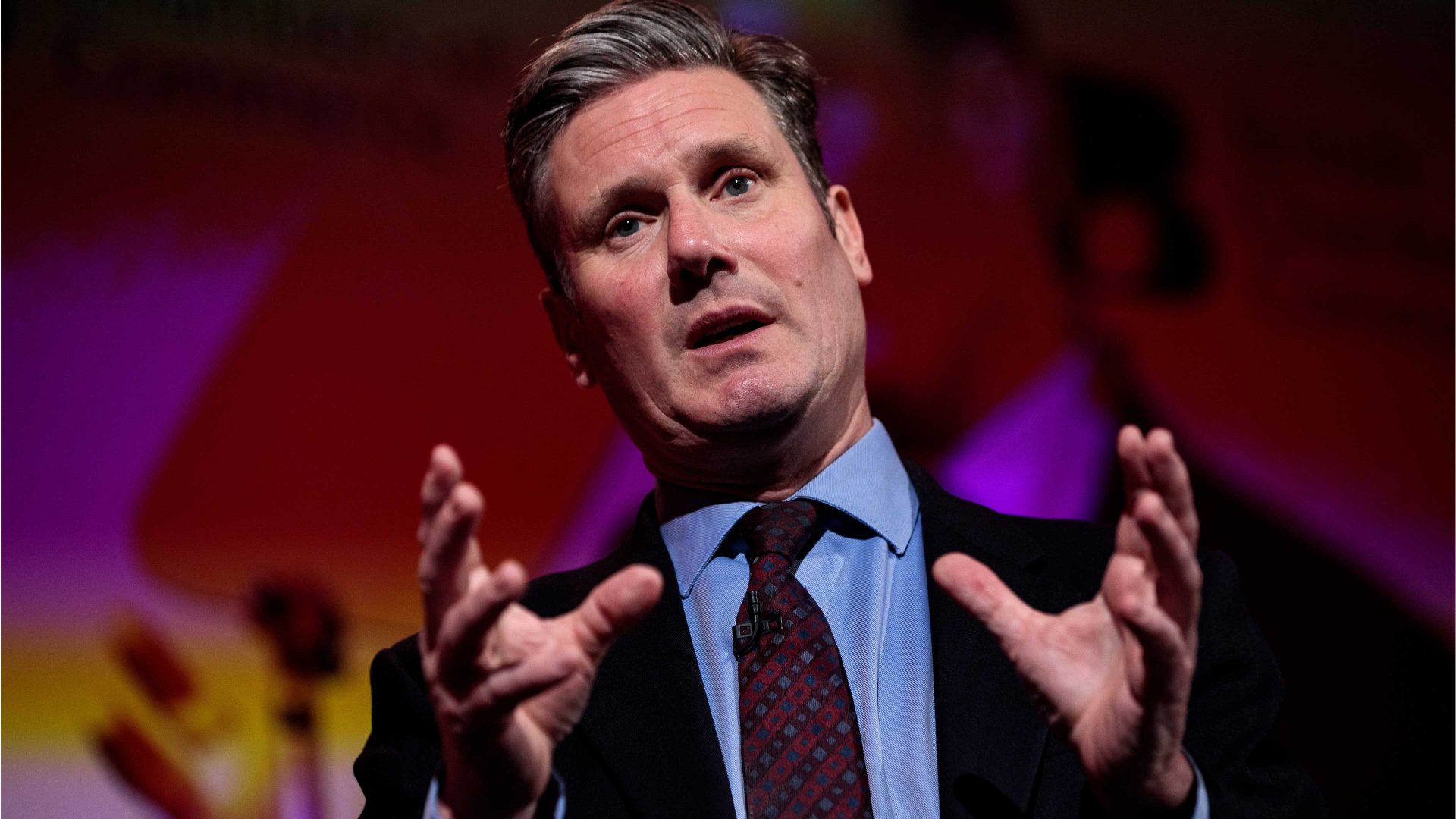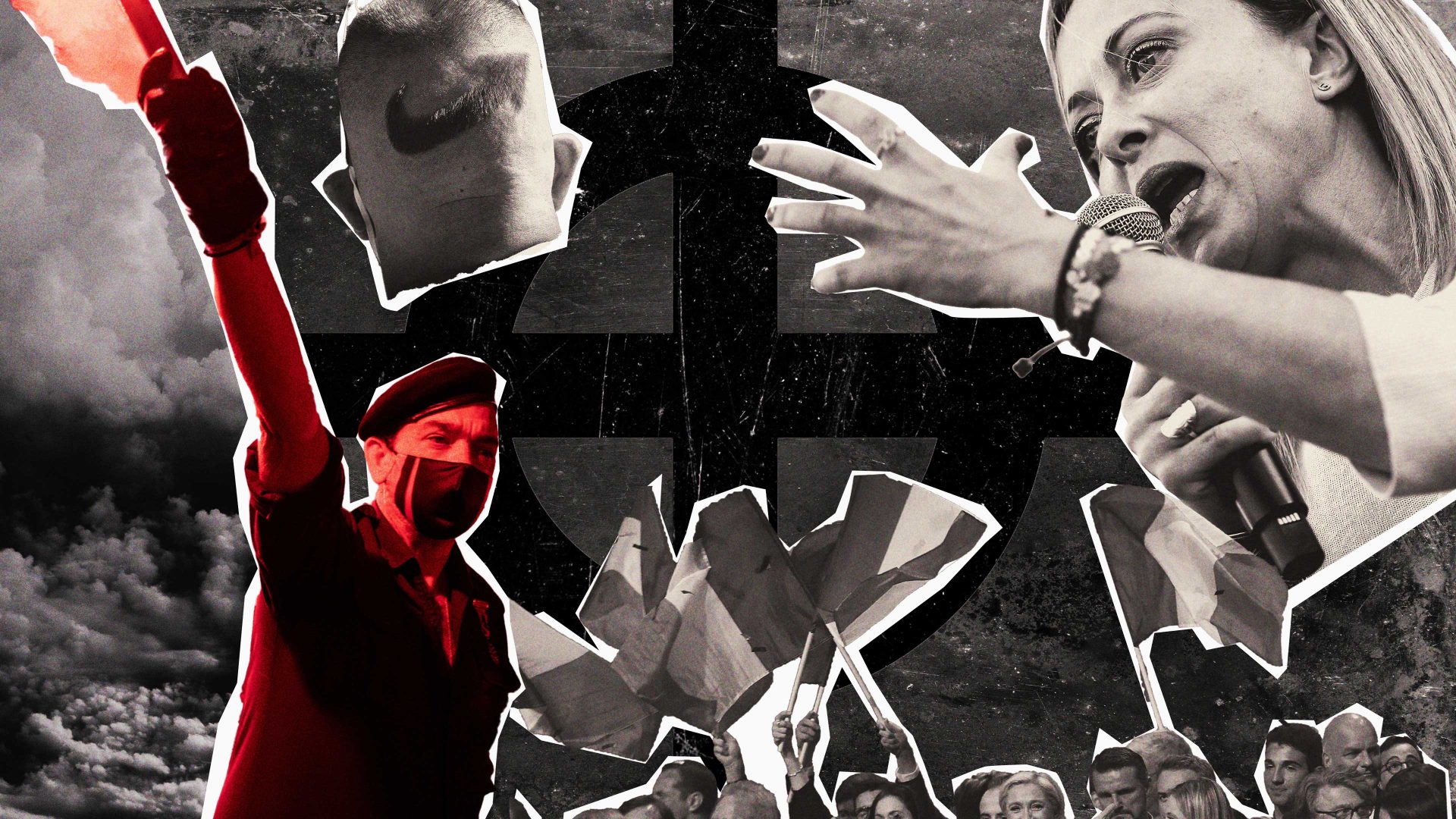The word “cult” brings quite strong imagery to mind. For those who grew up on horror movies in the 1980s and 1990s, it evokes hooded robes, Satanic stars and demonology. More recently, it calls to mind the cult-like practices of Scientology or the bizarre sex cult NXIVM – which lured in recruits by posing as a businesslike self-help movement.
Tackling these traditional cults was difficult enough – Tom Cruise’s odd pseudoreligion spent years in legal battles with the US tax authorities (and won), while it took years for NXIVM’s founders and senior leaders to eventually be jailed – and while one prominent member, the Smallville actress Allison Mack, was freed last week, its founder, Keith Raniere, is serving a 120-year sentence.
But what do you do about a cult that spans the globe and yet has no obvious leader?
This is the question facing the world today with the QAnon movement – a conspiracy theory that began in 2017 with the core idea that then-president Donald Trump was battling a global Satanic paedophile ring, headed by his 2016 White House rival Hillary Clinton.
The conspiracy, or cult, was born in the unlikeliest of places – on the anarchic online forum 4chan, where it seems to have begun as an in-joke of sorts, on a thread in which different anonymous users pretended to be officials in different wings of the US intelligence agencies.
The post that started it all was sent on October 28, 2017, in a thread entitled “Calm Before The Storm”.
It began: “HRC extradition already in motion effective yesterday with several countries in case of cross border run.”
Days came and passed with no arrest of HRC (Clinton), but the total failure of the prediction to materialise did not seem to shake people’s faith or interest in the posts of the “Q clearance patriot”. They were cryptic, elliptical, and subject to interpretation – a movement grew up desperately trying to fit world events to Q’s “forecasts”.
The account drew a cult following, but could have stayed niche – until the influencers arrived. Quickly, it became clear that Q-related YouTube and Facebook posts attracted a large and enthusiastic audience, and more and more people started watching them without having ever gone to 4chan.
One shared feature of almost all of these videos was the habit of urging viewers not to trust what the influencer was telling them. Instead, they should “do their own research” to verify what was being said.
This sounds like the kind of critical thinking we would all wish to encourage, but in practice it helps people to self-radicalise in a system almost as efficient as those devised by real-world cults. People are pulled in by the parts of the conspiracy they personally find most compelling, and are supplied with links that seem to verify those aspects.
Eventually, you hit a point where you have to believe that for the allegations to be true, thousands of people (or more) would have to be knowingly conspiring against the public. Once you believe that such an elite grouping exists for one nefarious purpose, it is a lot easier to think they might be up to other things, too – and so parts of the increasingly elaborate QAnon conspiracy that someone would initially have rejected become all too plausible.
QAnon began as a tightly focused US-centric conspiracy theory based on the 2016 presidential election. It evolved as it grew between 2017 and 2019, but was largely still within this focus – claims of child abuse increased to involve the idea of hundreds of thousands (if not millions) of missing children kept in underground tunnels – and similarly outlandish ideas – but it still centred on the same few issues.
Lockdown changed that. With more people having much more time on their hands at home, and with the unprecedented restrictions on daily life that coronavirus restrictions brought, the atmosphere was febrile.
QAnon absorbed the fringes of lots of these movements. The hardest edge of the anti-lockdown protesters, the anti-vaccine groups, pressure groups against 5G and more all united in QAnon-adjacent spaces.
When the head of the World Economic Forum – which organises the lavish Davos forum every year – put out a book titled The Great Reset during the 2020 restrictions, Prof Klaus Schwab and WEF were woven into the conspiracy. As one expert put it, QAnon became “the conspiracy theory that ate the other conspiracy theories”.
It doesn’t stop at mere strange beliefs, though. When QAnon was kicked off mainstream social media websites in the wake of the US Capitol riots of January 2021, it was left with the messaging app Telegram as its new home. While cutting QAnon off from the mainstream slowed the pace of new recruits to QAnon, it served to radicalise many who were on its fringes.
Not only had they seen QAnon silenced – which many took as a sign it was rattling those in power – those inside the movement often spent far more time focused on the conspiracy. The son of one QAnon adherent said his mother had gone from spending a few minutes a day following the conspiracy to 11 hours or more focused on the channel.
When you believe the world is being run by a grouping as evil and determined as the “globalists”, it becomes an obsession – and it becomes maddening if those around you do not believe it. Q followers soon began to encourage each other to cut off friends or family who tried to pull them out of the movement – a practice almost identical to Scientology’s “disconnection” of sceptical relatives.
All of this has real-world effects. A lie could always get around the world before the truth booted up, but in the internet era, whole movements can arise and evolve before the mainstream even starts to understand how to counter them.
The consequences of failure are all too grave – even deadly. In August 2021 alone, there were fatal incidents on both sides of the Atlantic connected to QAnon and its adjacent movements.
On August 5 in Plymouth, 22-year-old Jake Davison killed his mother and four others, including a three-year-old girl, in a rampage with a shotgun, before turning the gun on himself. The attack was the first mass shooting in the UK in more than a decade.
Davison had apparently been radicalised by multiple online movements, all originating in what is now known as “chan” culture. Coverage at the time largely centred on Davison’s public identification with the incel (involuntary celibate) movement.
But Davison’s online posts also reflected QAnon-like sentiments, stating his belief that “there are many paedophiles and even reported devil worshippers”. He had posted disturbing, misogynistic videos to YouTube, which were only deleted the day after his attack.
Just days later, Matthew Taylor Coleman, a surf-shop owner from California, killed his three-year-old son and 10-month-old daughter in a premeditated murder on a ranch in Mexico. According to a criminal complaint filed in US court, Coleman told the authorities he was “enlightened by QAnon and Illuminati conspiracy theories” and had killed his children because they had “serpent DNA” passed on by his wife.
We should always be wary of attributing any killing, or even any violent event, to just one cause. But the fact we can’t definitively say QAnon is the sole cause of any given killing doesn’t mean we can’t say it’s dangerous. It clearly is – and yet it is barely given any regard. Governments fund multimillion-pound schemes against Islamist or far-right radicalisation, and yet seem to leave these more modern, hybrid phenomena to the media to tackle.
The strange thing about QAnon is that it started with one anonymous account – the one that came to be known as “Q”. But while for years users would wait on tenterhooks for the latest post (known as a “drop”) from Q, the account has been irrelevant to the movement for years.
It is widely believed that the original “Q” had their account stolen after just a few months, by the owners of 8chan – the site he had moved to when he feared 4chan would ban his posts. People still avidly followed Q’s posts for another year or two, but Q was in no meaningful sense the leader of the movement he had started. He might be a prophet, but he couldn’t direct his followers, and never tried to do so.
This is a new phenomenon – leaderless, nebulous, global movements that can spark extreme violence and political upheaval. There is no inner circle to arrest or detain, and by 2023 there are now billionaires happy to enable the movement.
QAnon’s accounts disappeared from Twitter in January 2021. Elon Musk brought them back within a month of buying up the site just over a year later.
QAnon will continue to absorb new ideas and evolve, beyond the control of any one of its members. In other words, it is transmissible, it mutates, and it is damaging to human society – all characteristics that lead me to characterise it as something akin to a digital virus.
The phenomenon QAnon might not itself be alive but so what – neither are viruses. They are simply self-replicating organisms (if a virus was stored as digital data, you could fit hundreds on a single floppy disk – a human takes up roughly one CD). What distinguishes the real-world version from a digital pathogen?
Most efforts to tackle online conspiracies do so through the lens of disinformation, imagining that fact-checks, better moderation or better-managed social networks could go a long way to fixing our issues.
But thinking of QAnon and similar movements as biological entities that evolve in dark corners of the internet and then spread across the mainstream – and figuring out why this happens – reshapes our understanding of what has gone wrong and how to tackle it.
Natural reservoirs (such as rainforests) are the perfect breeding grounds for viruses and bacteria to change, to evolve, and then to emerge. Our problem is that we have created digital reservoirs, too, from which QAnon and its precursors – some benign and some also deadly – emerged, and from which future movements will also emerge.
Understanding those digital reservoirs and the lack of control we seem to have over them is key to understanding these new digital movements. And while we do not yet know how real-world viruses move from animals to humans, working out how digital movements evolve and emerge should be an easier task – and one we should be working on urgently.
We need to study how digital pathogens spread and evolve, and work out the equivalent of a digital public health service – able to protect free expression, thinking and creativity while keeping the public space healthy.
If we’re going to have any hope of returning to a saner public discourse – and that is our only hope of tackling the many other issues facing us as a society – we don’t have much time left.
The Other Pandemic: How QAnon Contaminated The World by James Ball is published by Bloomsbury on July 20, 2023




